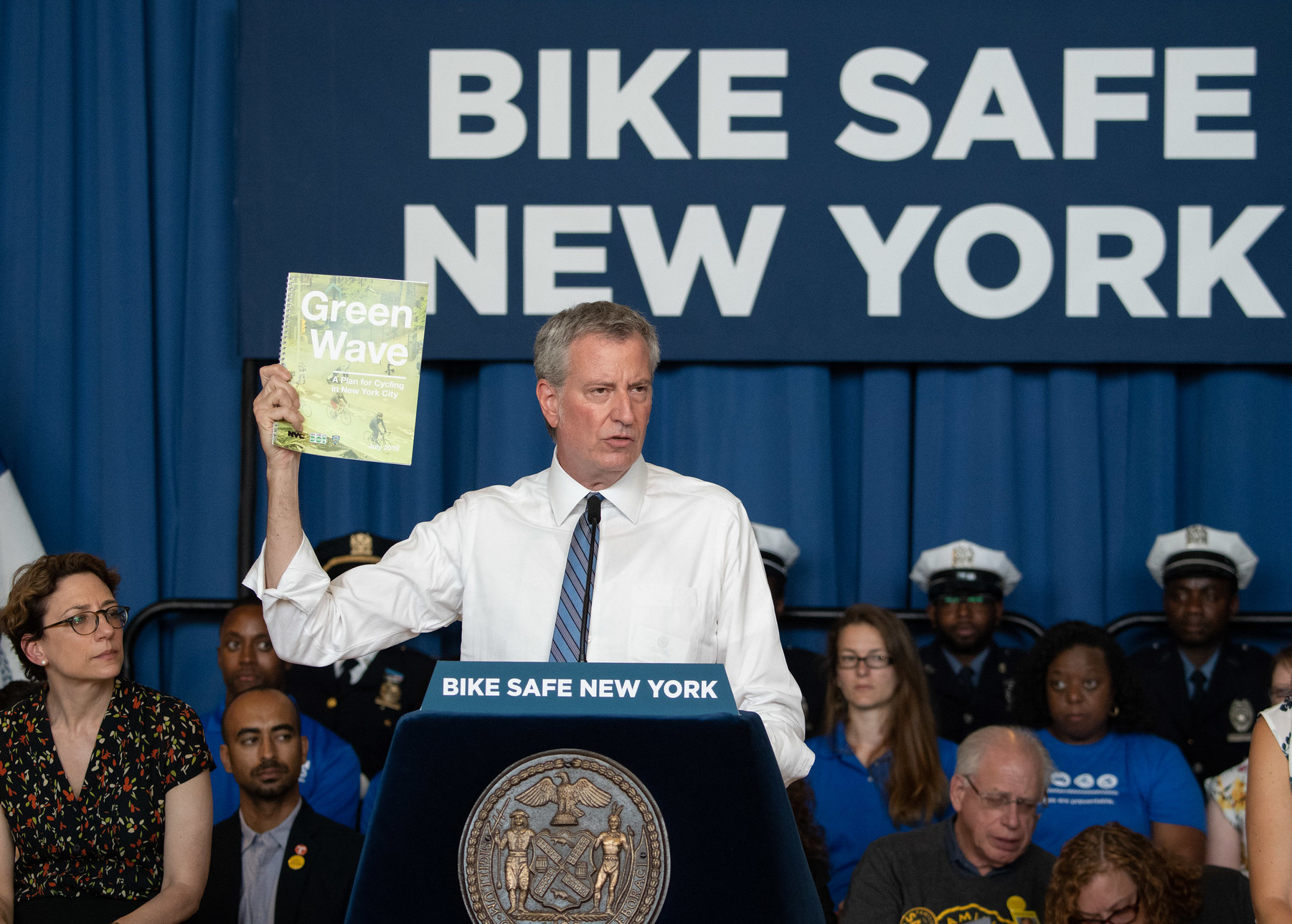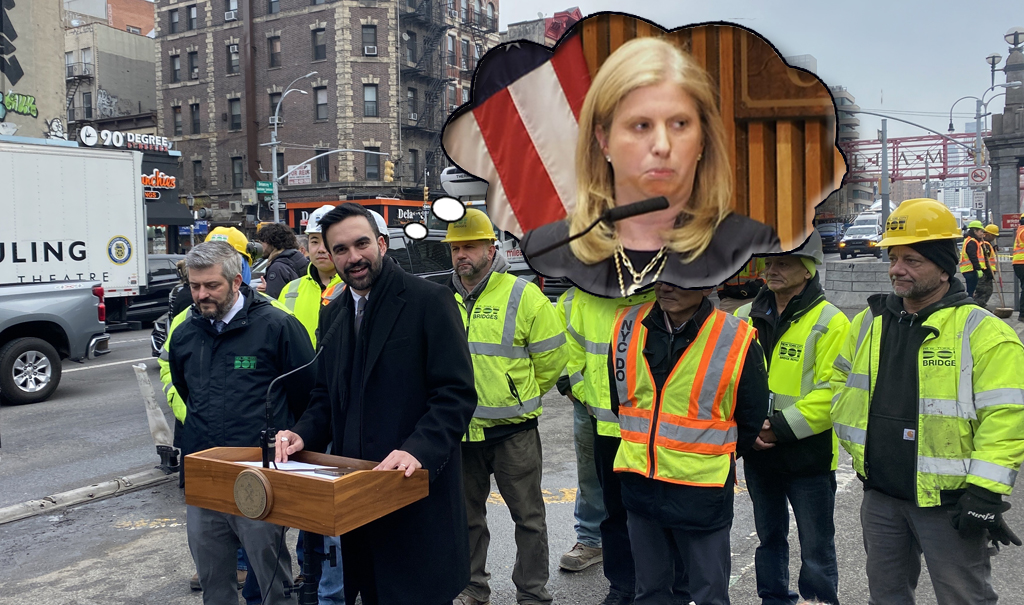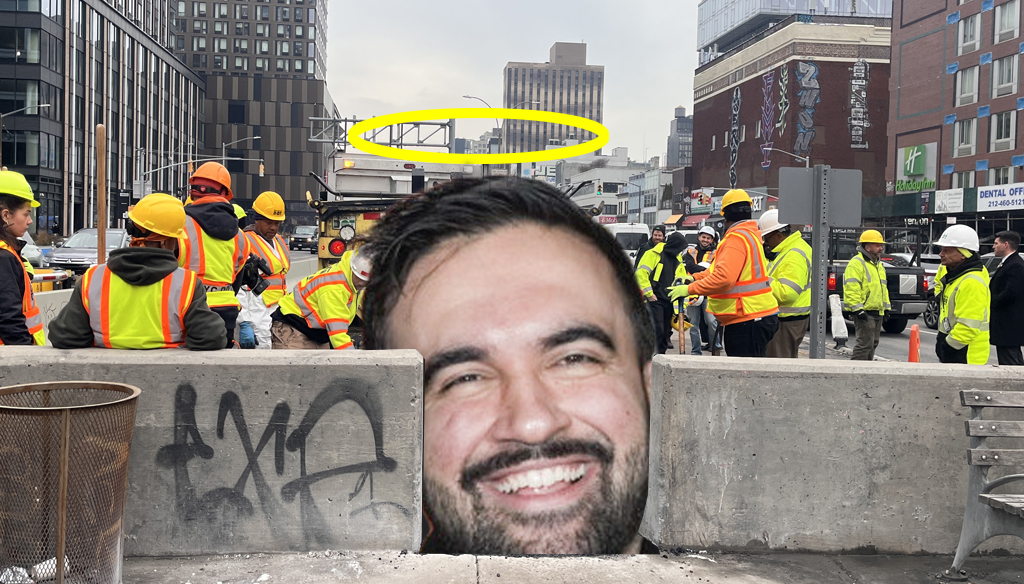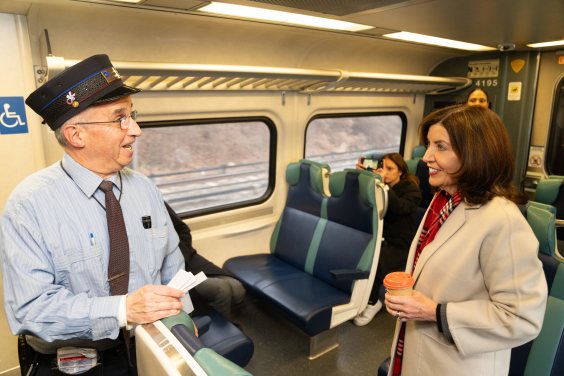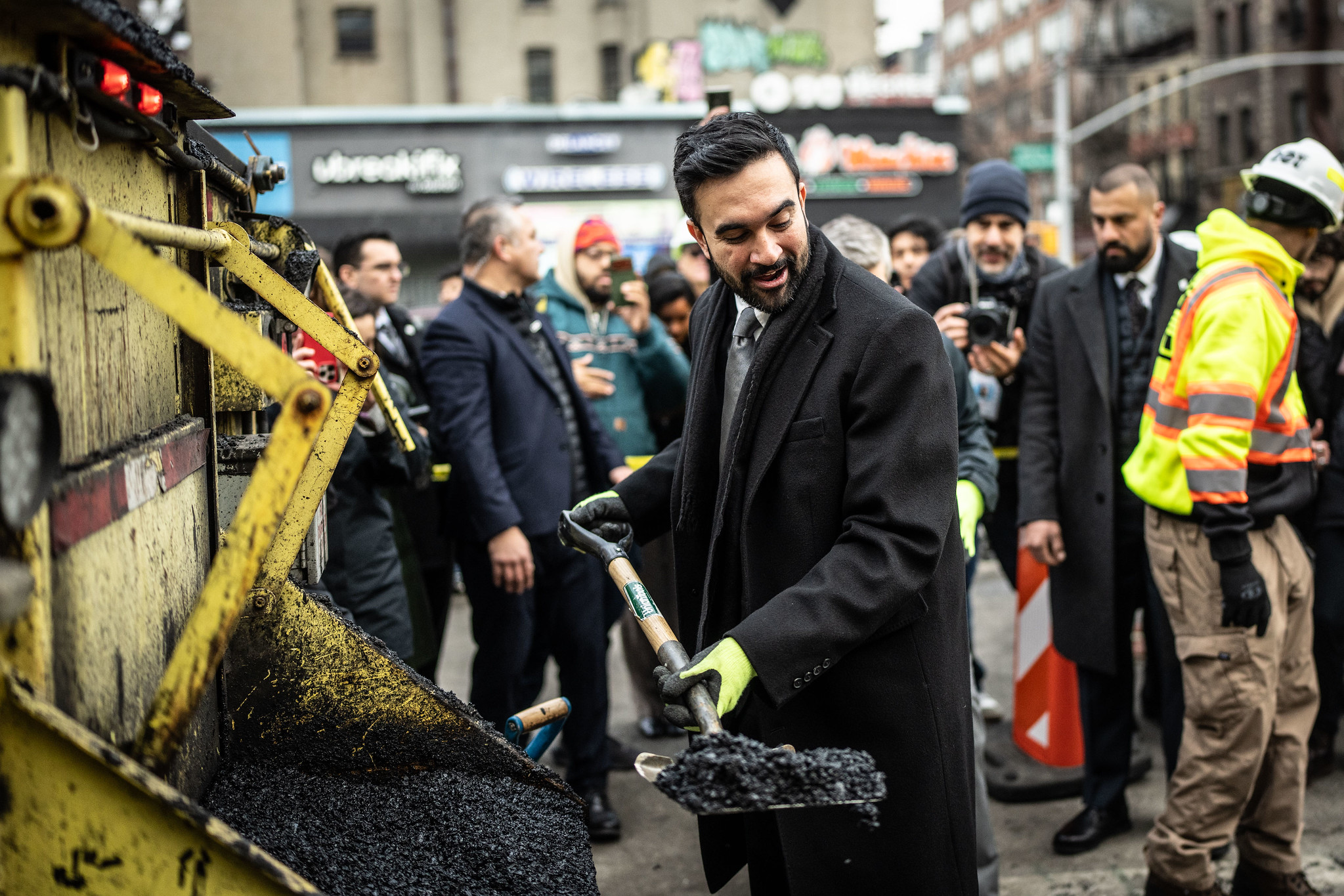The year 2030?
That's how long city cyclists will have to wait until the Department of Transportation finishes what it considers a fully protected, fully citywide bicycle network.
That's just one of the many shortcomings of Mayor de Blasio's so-called "Green Wave" plan — a bid by the mayor to staunch violence by car drivers on New York City streets that has led to the deaths of 17 cyclists, seven more than all of 2018.
Oh, and what about those car drivers? There's nothing in de Blasio's "bicycle safety plan" that truly imagines a city without those drivers or their 3,000-pound machines, which more and more mayors across the globe are realizing are anathema to urban life. Mayor de Blasio, however, might just be the only mayor on the globe who, when faced with a wave of bloodshed like no other in his tenure, fails to address the root cause: the onslaught of cars.
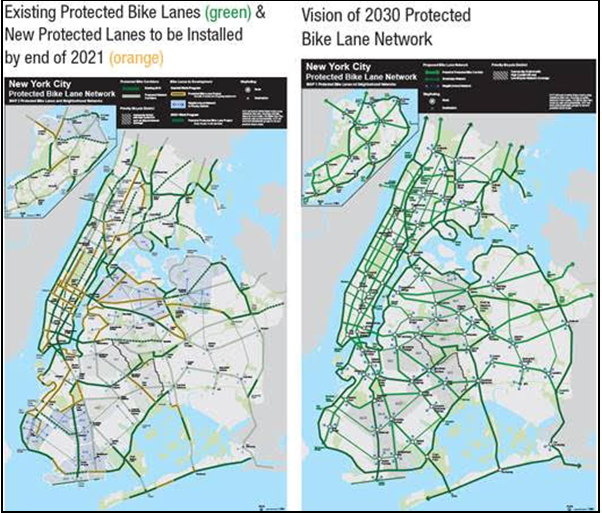
Indeed, Hizzoner did not even pretend that his plan was as bold as it could be, telling reporters merely that it was "as ambitious as possible" —though its timeline is slow, its scope limited and its sheer ballsiness castrated. And it was particularly ironic that he made the announcement in Bay Ridge — a terribly dangerous neighborhood of double-parkers and reckless drivers where, instead of announcing a bold bike lane plan earlier this year, the Department of Transportation capitulated to a local community board and instead offered merely some painted lanes.
"We’re not removing any travel lanes; we’re not removing any parking lanes," a DOT representative had told the board. "We’re going to keep saying it maniacally."
So, finally, the mayor is paying attention, but his "Green Wave" plan doesn't do enough to consider the lives of the most vulnerable street-users. Let us count the ways:
Drive in peace
The mayor's plan offered nothing to proactively reduce car driving in this city. Instead, he expects that congestion pricing (and the better transit system it is supposed to fund), more bike lanes, and the tripling of the Citi Bike fleet will result in more cycling and less driving.
But nothing in his plan specifically seeks to reduce the pernicious effects of the automobile. Yes, the mayor's plan calls for 30 miles of protected bike lanes per year, but that's far short of the 50 miles sought by Council Speaker Corey Johnson or the 100 miles championed by Council Member Ydanis Rodriguez.
But whatever number you pick, it's all backwards — as if cyclists are supposed to be content with getting a little bit more of roadways entirely dominated by vehicles that are causing all of the deaths. A truly bold plan would have at least called for removing automobiles from some neighborhoods or even some roadways, as mayors of other world-class cities have done.
In any event, it's time to shift the argument: A true pedestrian and bike safety plan would call for removing cars from whole sections of the city — and then slowly increasing the number of "protected car lanes" once this perilous form of transportation is tamed.
Reminder: This administration's stated goal in 2014 was for 6 percent of all trips to be made by bike by 2014. Now the mayor has moved the goalposts, hoping that 10 percent of all trips will be made by bike ... by 2050.
Yes, the mayor called cars "an essential part of the problem," but he simply had no good ideas to get them off the streets.
The de Blasio stop LIVES!
The mayor could not even distance himself from one of the singular boneheaded comments of his administration, namely, that it is all right for drivers to quickly drop off or pick up someone by blocking a bike lane.
He said it in 2018 — "If someone’s blocking it for – for example, a bike lane, for 30 seconds while they take out the groceries or let their kid off, I don’t think they should get a ticket for that" — and it was so ridiculous that it won our year-end award for the dumbest thing the mayor said all year.
On Thursday, at a bike safety announcement, he said it again!
"I still believe ... I’m using the obvious example having been a parent myself, if a family is dropping off their kids for – and it’s a very brief stop – there still has to be some discretion," he said.
A brief stop? A brief stop is the exact kind of stop that got Madison Lyden killed on Central Park West.
Priority mailed in
Asked about the fact that the bike-priority districts outlined in the Green Wave plan are still the same low bike infrastructure, high-death and -injury areas for cyclists, DOT Commissioner Polly Trottenberg said that the areas had "an urgent need for more infrastructure."
But there was no indication of what exactly that infrastructure would be. (DOT previously told Streetsblog that the 10 districts would get 25 miles of bike lanes by the end of the year, but did not specify protected or unprotected.) And the mayor, in an obtuse victory lap, told reporters that "obviously what we did in 2017 led to a safer 2018" when asked about the priority districts — despite the fact that data clearly show that injuries went up in eight of the districts over the last two years.
What timeline?
In one sense, we have a timeline on cycling safety, as the Green Wave report set a goal of a "fully realized" protected bike network by 2030. But timelines can change: Candidate de Blasio promised that we'd have much more cycling in this city by now. And Mayor de Blasio promised that all of Queens Boulevard would be fully tricked out with a protected bike lane, but the fourth phase is stalled in some sort of backroom political horsetrading.
"It's going to be done," the mayor said twice when asked about the delays to that vital link. Why not give a date? Why not finish the job?
Unfinished business
The mayor did not address the main source of problems with executing a street safety plans: community boards.
Yes, local knowledge can make projects better, but the Department of Transportation is too eager to consult with community boards, which are generally far less diverse than the communities they supposedly represent. It bogs down street safety projects — leading to lawsuits, as on Morris Park Avenue, when locals refuse to be appeased even by scaled-back DOT plans. The mayor has not even moved to discipline a Queens community board member who said in May that Vision Zero "is a joke" and that "pedestrians deserve to get hit."
That woman, Kim Ohanian, works for the mayor at the Department of Environmental Protection.
The mayor has not cracked down on cops who park in bike lanes. He has not cracked down on police officers who drive recklessly.
Even the NYPD ticketing blitz that will now be made permanent is a weak effort; during the three-week enforcement blitz that followed the 15th cyclist death this year, cops wrote five tickets for blocking bike lanes per precinct per day and only two tickets to drivers for failing to yield per precinct per day.
Most cyclists see as many transactions in a single ride.
